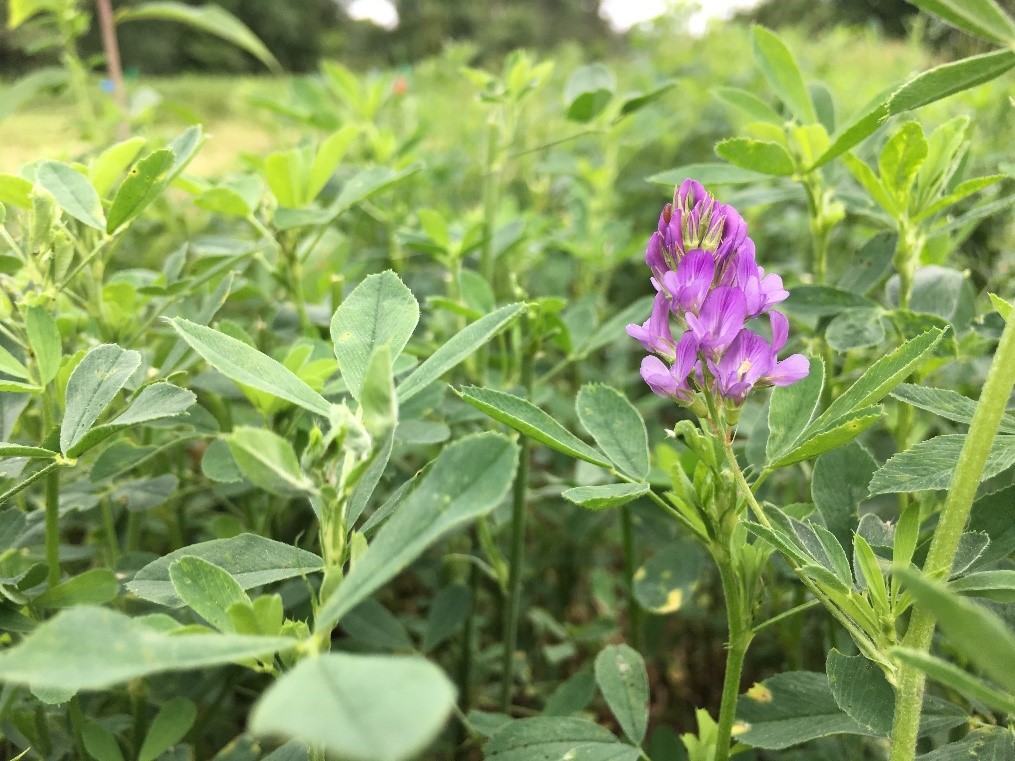In a recent study published in Crop, Forage, and Turfgrass Management, researchers investigated the effect of harvest intervals on the persistence of alfalfa in the field, either as a monoculture or mixed with grasses (such as bermudagrass and tall fescue). Four harvest intervals were imposed on all species combinations.
The team found that longer alfalfa harvest intervals in the southeastern U.S. resulted in positive outcomes. They also observed that growing alfalfa in mixtures with tall fescue resulted in greatest forage mass and nutritive value.
This study highlights the importance of investigating management of alfalfa and alfalfa mixtures before producers attempt to incorporate the species into their operations. The results from this study suggest that harvesting alfalfa at 42-day intervals produces the maximum amount of alfalfa productivity and persistence.
Adapted from Quinby, M.P., Nave, R.L.G., Bates, G.E. and McIntosh, D. (2020), Harvest interval effects on persistence and productivity of alfalfa grown as a monoculture or in mixtures in the southeastern U.S. Crop, Forage & Turfgrass Mgmt. Accepted Author Manuscript.
Original post https://alertarticles.info


